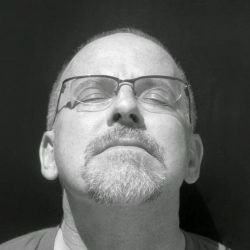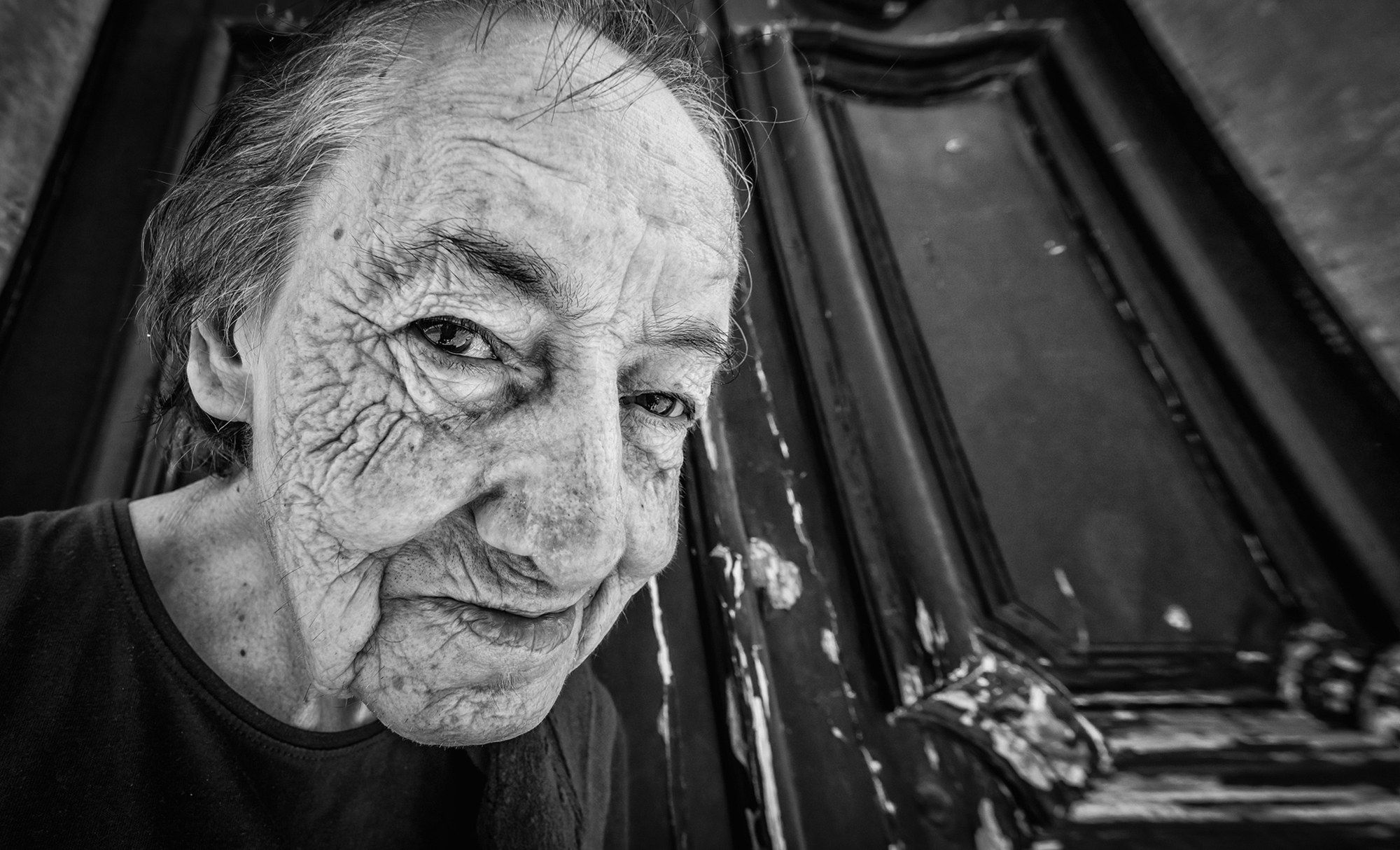Introduction
I’m emotionally exhausted.
I just spent the last three hours studying various photographs created by Portuguese photographer, Vasco Trancoso.
In a world where we are inundated with visual images, do you ever feel compelled to look at one photographer’s work for that length of time?
Probably not, which should be your first clue that Trancoso is nothing short of incredible!
His work brings together a photographic skillset that few possess. In fact, other than some of the master photographers from the early years of photography, I’m not sure that I’ve come across anyone with such a finely-tuned set of aesthetic, psychological, and athletic abilities as Vasco Trancoso.
Let me break that down for you.
Aesthetic: His images consistently display that elusive “Decisive Moment” factor that many street photographs taken today simply do not possess. He also has an impeccable sense of composition, placing each and every element at the “perfect” spot within his image.
Psychological: As you view his photographs throughout this interview (and I encourage you to go to his blog at www.vascotrancoso.blogspot.com and continue to view his work there) you will notice that he has an intimacy with his subjects that, at moments, can be almost disconcerting. His eyes, and camera, are a window into the souls and scenes that he photographs. He is clearly a deeply thoughtful man. Every image has a meaning. He often gives you the meaning in his captions but many times he leaves it up to you to discover for yourself. You can’t help but find yourself combing over every inch of his photographs, searching for the clues that you know are there.
Every image has a meaning. He often gives you the meaning in his captions but many times he leaves it up to you to discover for yourself.
Athletic: Trancoso has chosen street photography as his venue. Street photography is challenging in numerous ways, but in particular because it requires the photographer to interact with total strangers. Sometimes those strangers don’t like what the photographer is up to and that requires courage. Vasco doesn’t just photograph strangers; he gets right into their faces. And yet, they seem to release all of their being to his camera, which brings up the second part of his athletic ability: timing. Timing is a photographer’s trait that seems to be disappearing with the proliferation of online imaging. Everyone takes a picture, applies some digital manipulation, and it’s a masterpiece. Timing is the very basis of where street photography started. The “Decisive Moment,” as coined by Henri Cartier-Bresson, is all about timing and anticipation. It’s about having the ability to capture peak action in a pleasing composition. Some timing ability can be learned, but to display such an acute sense of timing over a broad range of work puts Vasco Trancoso into the elite category of genius street photographer.
Trancoso dabbled in photography at a young age, but went into practicing medicine as a profession.
Perhaps his medical work helped prepare him to become the photographer he is today. I believe it probably did, especially in his ability to handle strangers with such compassion and love.
I pulled a quote from his blog. I think it makes my point…
“In street photography, I have concern to make portraits of people who live a marginalized life in a consumer society, especially those people who, unfortunately, have physical or mental disabilities. These people are seemingly invisible for the rest of the world. Walking beside them will not be wasted time, as street photography will help make the invisible visible.” – Vasco Trancoso
Are you with me? This man radiates warmth, love, and concern for his fellow human beings!
I can’t tell you how many times that line has replayed in my head since I read it:
“Street photography will help make the invisible visible.”
Trancoso’s photographs have won numerous awards, and they’ve been published in several books. He is a recognized leader in the Portuguese photographic community.
This photograph is the first photograph of his that I ever saw…
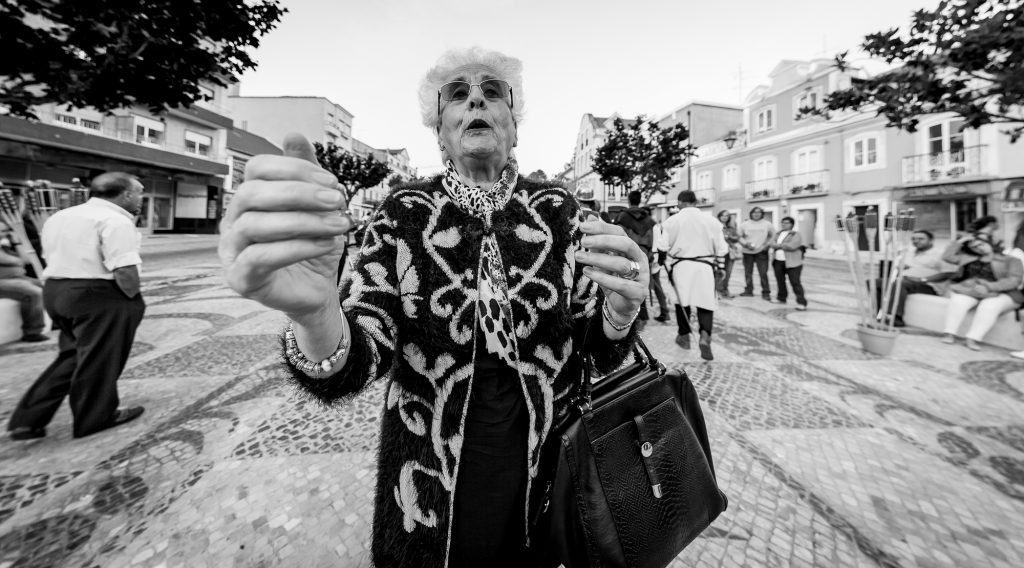
Trancoso titled this photograph “We are not what we think we are”. Think about that for a moment. That’s a pretty heavy statement. And when you study this photograph you realize just how true a statement this really is. It’s clearly evident that this woman, with her fine clothes and jewelry and her expression of contempt, does not see herself as she really is. She sees the beautiful young woman that she once was, still walking the streets, holding her head high, expecting catcalls and looking down on those that aren’t up to her standards. Don’t we all do that to some degree? See ourselves as something we were, or wish we were. The photograph, combined with the words, is so compelling it’s hard not to
keep thinking about it! Photo by Vasco Trancoso
I’m always excited to interview a photographer whose work I respect.
But this interview… this interview is something special. This isn’t going to be simply about photography. I will ask some technical questions, I’m sure, but what I’m really interested in (and I hope you are too) is what makes this man tick. How did he change careers at a late date in life and so masterfully capture a genre of photography that very, very few are capable of?
Let’s find out.

Photo by Vasco Trancoso
The Interview
KD: “Vasco, thank you for giving me the opportunity to interview you. Tell me, on an average day when you pick up your camera and head out into the streets, what are you thinking about? Do you have a plan? Or do you just walk about and see what life presents you?”
VT: “Thank you, Kent, for your invitation. It was a good surprise, and I will be happy to share not only some of my images, but also to talk about something I love: photography.
Photography made in the streets fascinates me by the unpredictability, as in jazz, and life. I have a daily routine where I´m doing photos mainly for me, and for pleasure, and usually I do not have a predetermined plan. Sometimes I have referenced a site such as a wall with ads, or shop windows that may be an appropriate background for a good composition — if the right protagonist appears. But I do not wait too long. I love to walk randomly — hoping to find one of the everyday miracles that often happen in the streets. The world is full of opportunities to make great shots that have not been photographed yet. Beauty is everywhere. Of course, I often think that I am very lucky, and that the God of photographers protected me — just at the right time.”
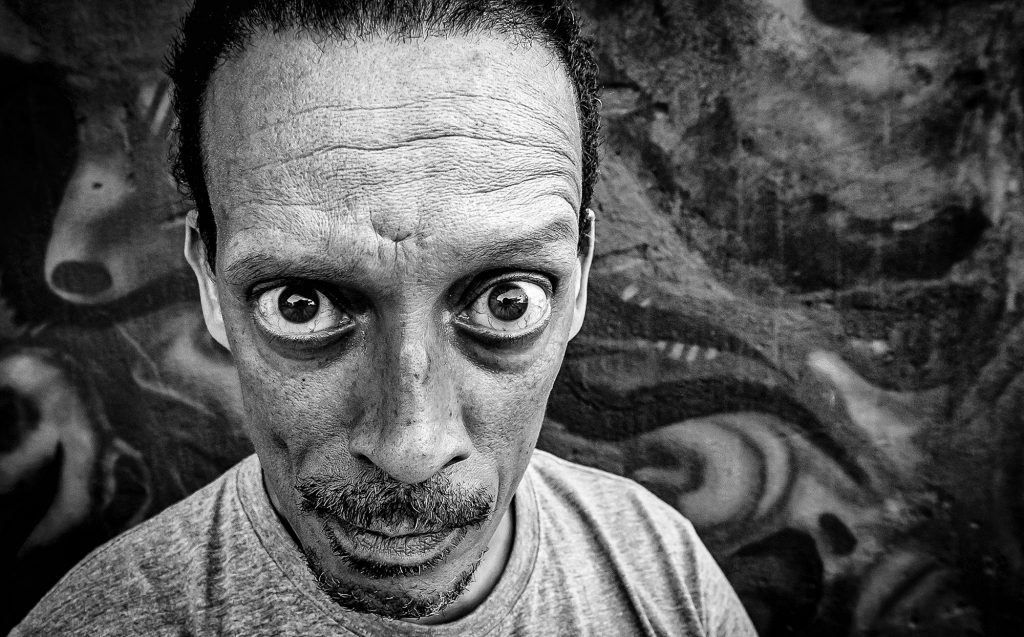
Photo by Vasco Trancoso
KD: “Many of your photographs are extreme close-up portraits. The camera almost seems to touch the subject’s face. This seems like it would make a subject uncomfortable. Yet, that feeling isn’t present in your photographs. The subjects seem to openly give you something from deep within their soul. Can you elaborate on how you get your subjects to that point? How do you get your camera in a stranger’s face and have them open up to you?”
VT: “In the case of the close-up portraits, I´m usually talking to the people I met. I look them in the eye and shoot with the camera at the level of their chest or waist — as close as possible. I do not ask for people to smile. I avoid stereotyped smiles. I look for genuine expressions that arise spontaneously during conversation. It is important to listen to others and have an honest and friendly approach. It often happens that after the conversation, and after the photos, people feel better about their distress and concerns. And I feel what I felt before as a doctor: happy to help others. But I am also helping me. When I’m facing others, I´m also facing myself. After all, to photograph is also to learn about others and about myself. And my learning curve is still running — as a sign that personal search and discovery continues — outside and inside. Shooting on the streets of a city is a constant learning curve that requires reflection, especially about peoples’ lives. It is an act of love/compassion for others told by images.”
I do not ask for people to smile. I avoid stereotyped smiles. I look for genuine expressions that arise spontaneously during conversation
KD: “I read with great interest your blog post titled “After Photography”, which was published on January 18, 2015. You seem to have strong philosophical views on photography’s impact on the past, and where you think the medium is taking us in the future. I was particularly taken with your comment that photography today isn’t so much of an art as it is a utility — a tool for self-gratification — for example “selfies”. Could you summarize that blog post, and tell our readers what you think photography means to society today, and what you think it will mean in the future.”
VT: “There are more and more people who do not practice photography as an art. Instead, (as predicted by Susan Sontag) photography has become a cultural utility in a world where there is an increased insatiability for the photographic image. Its spread has grown, especially on social networks where people need to see confirmation of its view of reality — a growing aesthetic consumerism — where “selfies” proliferate in the various contexts of our day-to-day, providing more and more use by others, as well as possible control mechanisms. Social photography has evolved with the help of the new technology to a new paradigm. People involved in situations tend to register events with greater truth. An amateur, benefiting from prior knowledge of the culture, the place, and the people, is in a better position to transmit images of the social context in which he operates. A foreign professional photographer will have more difficulty to integrate and be accepted by the same community. The degree of trust from the community to the two types of photographers is quite different. The focus is more on the surprises and emotions of the day-to-day. The future points toward smartphone-sized machines, but they’ll be able to produce images with the same, or higher quality, of the current great DSLRs, but with less complexity of operation. After photography, as we know it today, probably almost everyone will have mini digital cameras to “point and click” linked to social networks (and/or government organizations that control the processing of the images and the diffusion onto a new digital world).”
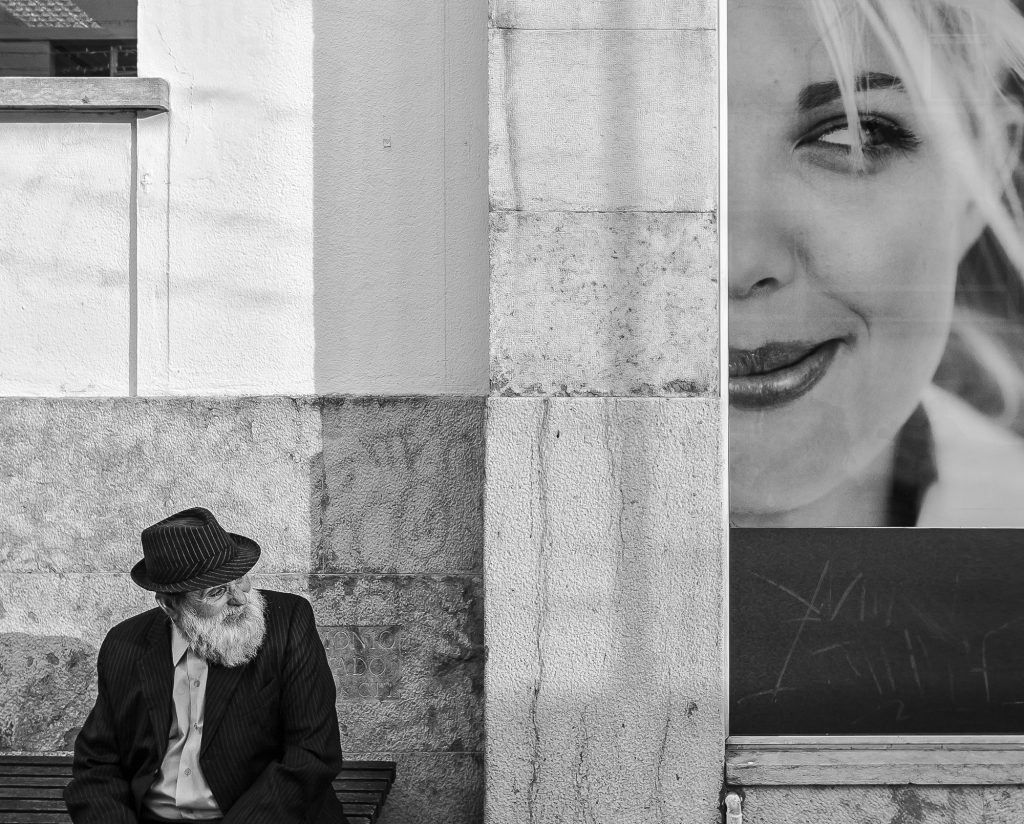
Photo by Vasco Trancoso
KD: “Your street photography displays two distinct styles. One, such as the photograph of the elderly man and the beautiful woman in the advertisement, and the second being those penetrating close-up portraits. Despite the fact that these two styles are very different in their structure — and how you would go about creating them — they carry an undeniably similar theme. You have really nailed the concept of capturing the human condition. Tell us, why do you think that is? Was it your background in medicine? Was it the way you were raised? How did you develop this ability to creatively interpret the world of the streets?”
VT: “Both of these styles emerged from the first moments when it all began, in October 2014, with a close-up of the photo of the man with a beard and piercing eyes, and also with the photograph of the elderly man and the beautiful woman in the advertisement (also pictured in this interview).
I found that taking time to photograph the streets brought me back in touch with people instead of things. And, it is certain that the photographer has gradually taken the place of the doctor in me. But, fortunately, because I was a doctor, I can now shoot without being a photographic “functionary”. I might not be able to make photography that someone ordered. Photography for me is a space of freedom where I evolve. At such times there is only the act of the photograph, and I forget myself. Everyone can fit into the framing. There are not excluded or invisible people in the theater of human life.
However, I do not know if what I’m doing should be called “Street Photography”. As you know, there are controversies about the application of this term. While some purists argue that Street Photography must be made exclusively, surreptitiously, in absentia of the subject’s authorization (not to modify the normal flow of events), others are more tolerant and have a broader concept of the art.
I think that, even in candid shots, reality is in some way also modified. Because the edges of the frame separate two worlds (what is included and what is excluded), and it´s this separation that creates the magical world of photography, it turns out to be different from what really happened.
I think that, even in candid shots, reality is in some way also modified.
However, we no longer live in the golden age of Henri Cartier-Bresson. This is a time when the laws, and the people, increasingly “attack” those who shoot on the streets.
I’d rather just say that my photos are made in the streets and with people. I´m not worried about definitions that can prevent me from doing what I feel.”
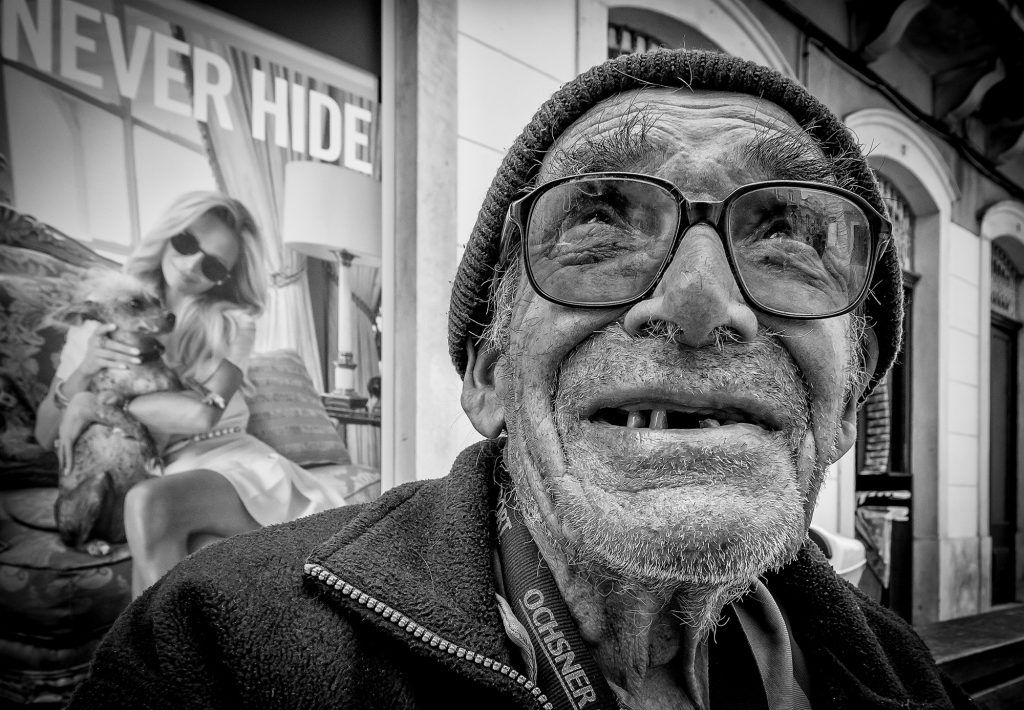
Photo by Vasco Trancoso
KD: “In reading through your bio, I noticed that in your youth you were fascinated with the Master Painters of Europe, and that you studied them and their aesthetic culture. What Master Painter do you feel most influences your photography and why?”
VT: “Especially the surrealist school and Salvador Dali. But in photographic terms the most important influence was the discovery of photographs by Tony Ray-Jones, in the 1970s, integrated into his book “a day off”. The social satire and humor combined with intelligent subtle and complex (and subversive) framing made me begin to see photographically in a different and deeper way. Another significant influence were the Fellini movies in which an almost caricature close-up is crucial.”
KD: “The photograph that you have titled “Never Hide”, of the elderly man, can you tell us how you created this image? It was one of the very first photographs of yours that I saw and was so captivated by. Did you know the man? Did you move him to include the sign in the background? Did he know you were taking his picture? The camera appears to be mere inches from his face. If he knew, how did he feel about you taking his picture so closely?”
VT: “In this case, I found this funny, and very expressive, old man of almost 90 years of age sitting on a street bench (ahead of the announcement on the wall behind him). I saw the possibility of a narrative dialogue between the man and the background. His name is Mr. Milhanas (I know almost all the names of the people that I have shot for a close-up portrait). He told me that he wishes to live many years, and he walks the streets to stay active. At same time that we talked, I was shooting with the camera at the level of my waist. I wanted a tight depth-of-field, but not too much, because I wanted the words (on the sign) to be readable. He was looking up at my face and I brought the camera to the level of his face. Of course, after conversation, I showed him the pictures.”
KD: “Do you pay your subjects? Or give them prints? Do you ever see them again? Do you develop a relationship with them, or just capture the moment in time and move on?”
VT: “When they show interest, I’m very pleased to offer a printed photograph. This was the case with the photo of D. Rosa, the elderly woman who walks with a cane next to an ad with a young woman (pictured in this interview). Rarely do people ask for money, but sometimes it happens.
Since I live in a small town where many people know me because of my background as a physician and director of the local hospital, the relationship becomes easier. It even happens I rediscover the same people and re-photograph them.”
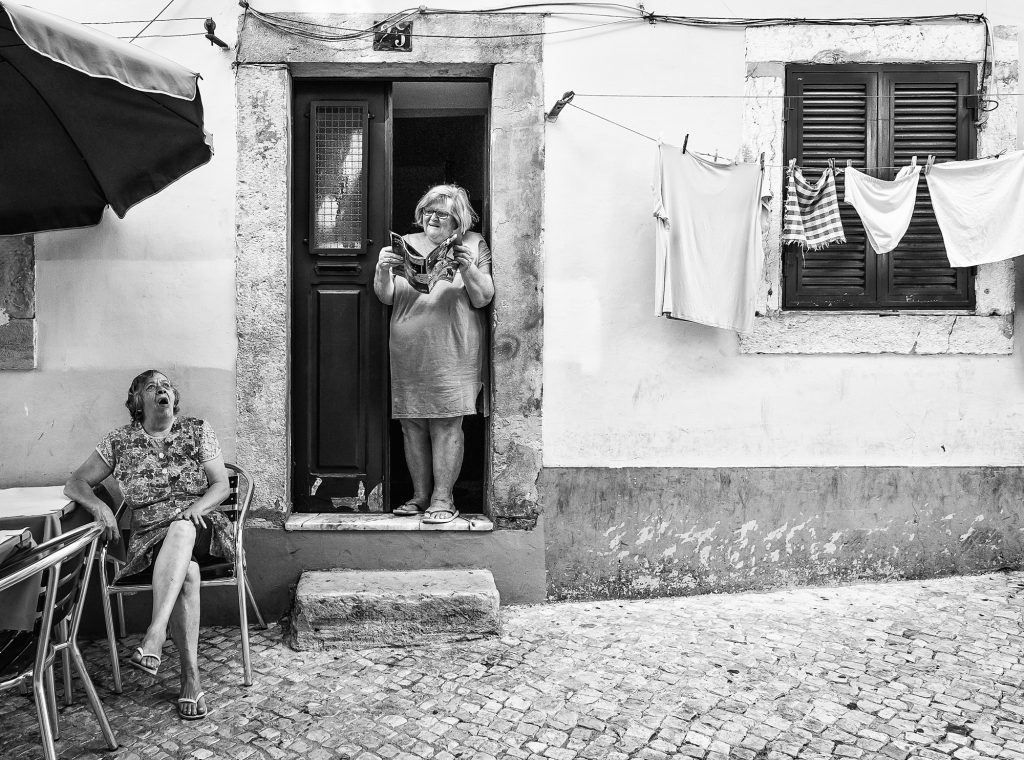
Photo by Vasco Trancoso
KD: “In your bio it states that your “road to seeing” was established at an early age. And during those early years you photographed traveling circuses, the 1974 Portuguese revolution episodes, and ancient hospitals in and around Lisbon. What happened to those photographs? Do you still have them? Did they reveal the “Decisive Moment” genius that your work now displays, or were they entirely different?”
At about four years of age I was taught to read, and my first book was an encyclopedia illustrated with painting reproductions from the great painters.
KD: “This extreme close up of the man staring straight into your camera reveals much, and hides some. His skin and beard look hardened, but his eyes seem to reveal a softer, gentler inside. What did this man say to you as you created this intense portrait? Did he simply pose, or did he tell you about his life?”
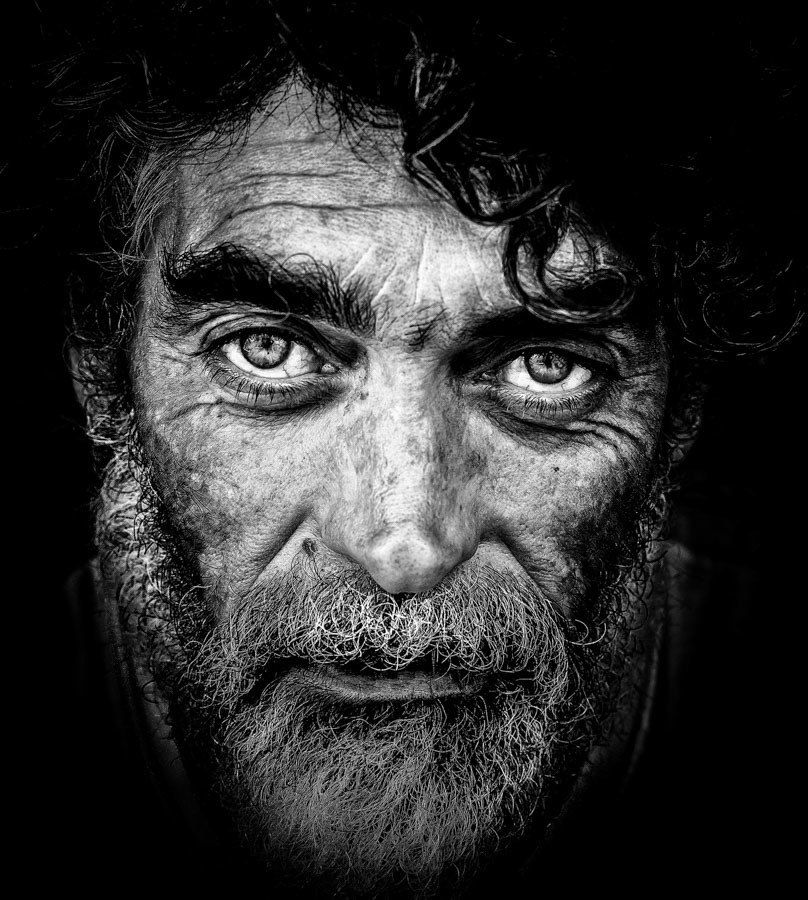
Photo by Vasco Trancoso
VT: “This man (above) is Mr. Fernando, and he was having lunch at the same restaurant that I was on October 4, 2014. I realized that the face would make an excellent portrait, and I talked to him about the possibility of making the picture. After lunch, the portrait was made at the same restaurant, in the doorway. I liked the final image, and thus began for me a new path in photography. Mr. Fernando proudly uses this photo as his profile photo on Facebook.”
KD: “You told me that after retiring from medicine and picking up the camera again you started with landscape photography, but eventually you migrated to street photography. Tell us about how you feel regarding those two different forms of visual expression? Why did you choose street photography over landscape photography?”
VT: “The photographer maturation process takes many years, and it can suddenly arrive at a turning point and accelerate to a different level. Then, everything can change.
When I started to make digital photography in 2010 (first with a compact pocket camera), it was a natural impulse to photograph the Óbidos Lagoon (8km away from my house) — it is the most beautiful, and largest, lagoon in Portugal.
But everything changed a year ago, when I rediscovered the (irresistible) pleasure of making photography on the streets — a healthy, and saving, obsession that “forces” me to walk every day. Without photography I probably couldn’t exist. I live alone, and photography is my daily “anti-depressive” drug for these days of retirement.
On the other hand, these photos about ordinary moments, of life nowadays, on the streets, they allow me to document and read and think more deeply about a time and a place where they were made.
In this case, my thoughts are about aspects of life in a small town in central Portugal.
Doing photos on the streets allowed me to discover new ways of shooting, and eventually led me to my own style. Achieving a distinct style is more difficult in landscape photos.
Of course, the contact with people was crucial. Especially those who due to a disability are excluded by society.”
KD: “You told me that you’re shy. Are you really shy? Because you don’t seem like you would be…”
VT: “Photography made on the street, for me, is a difficult exercise in communicability that forces me to overcome my natural shyness and be a better person. It is indeed a great challenge.”
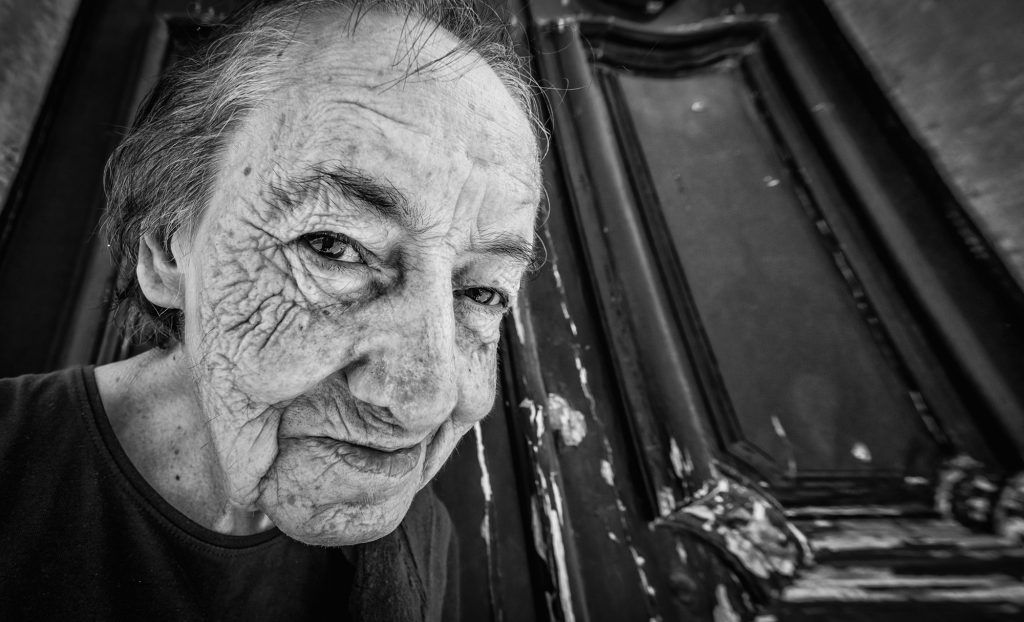
Photo by Vasco Trancoso
KD: “You shared with me that you have three daughters. Do they share your photographic spirit? Does your intimate style work on them when you take their picture?”
VT: “I constantly hear opinions from my daughters about the photos that I do. All are interested in photography, and one of them has a film degree. I also hear feedback from my younger brother who is a film producer, and he is also currently the President of the Portuguese Film Academy. The photographs that I do with them mainly have a familyoriented fun onto themselves.”
KD: “I never ask too many questions about equipment because I feel that equipment has little to do with the creation of exceptional photography. Would you agree with that statement? Would you mind telling us what equipment you use in your street photography, for those readers that like to know?”
VT: “I use a Canon Mark III and a Canon 5DSR with lenses 11-24mm and 24-70mm. But I agree with your observation. We should not be a slave of photographic techniques; they should not override the style, emotion and aesthetic sensibility. The medium of photography is not as important as the image itself. The “soul” of the image is more important than the technical details. When I appreciate a great photo I do not ask “how?” but “why?” There are differences between a piano and a sonata. You can have a great piano and not be able to produce good music.
Photography can be taught, but the remaining 90% appears only at the expense of sweat, blood, and tears of the photographer. Theory and photographic techniques are necessary, but they are not the most important. Photography is not the rules that sometimes seem to restrain creativity. The more we see pictures of the great masters the more we find images that break those rules. The camera is only a navigational instrument of the soul.”
Photography can be taught, but the remaining 90% appears only at the expense of sweat, blood, and tears of the photographer.
KD: “You’ve stated several times that you wish to champion for the underprivileged — those individuals that society has brushed aside. You also have a particular interest in documenting the exploitation of children and animals. How do you see your photography helping this segment of society? If you could use your photographs in some way to help them, what would it be?”
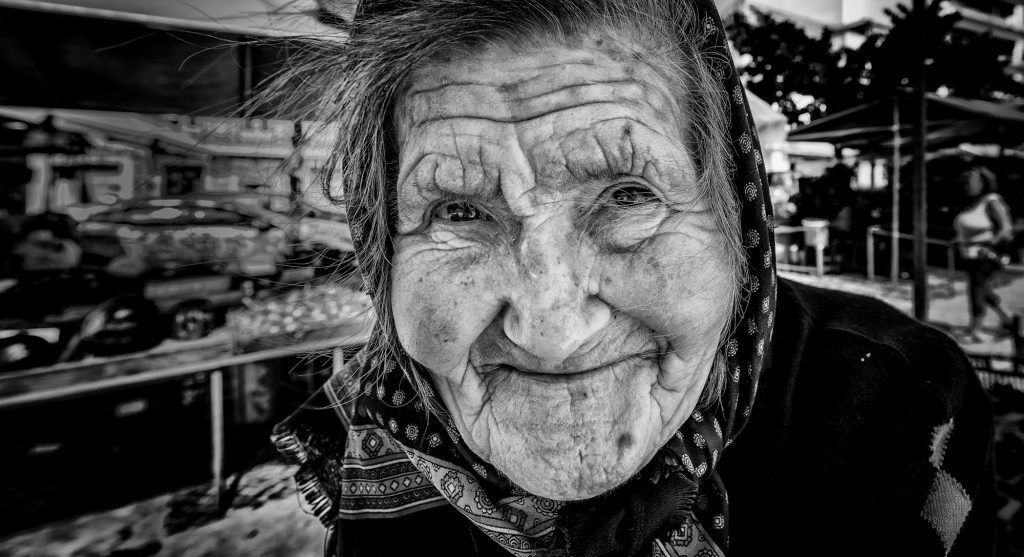
Photo by Vasco Trancoso (Copyright)
VT: “Photography can bring to the surface an almost heroic dimension and greatness to the marginalized people of the streets, and help make visible that side of our society. We cannot continue to pretend that we do not see it. Being different is a trait often misunderstood by those who cannot see beyond the superficial appearances of the underprivileged.
Photography has the power to transform reality according to our own dreams.”
KD: “When I look deeply at your portraits. It seems to me that your subjects are looking at you with love and affection. Are they? Do you somehow instantly connect with these people in some kind of deep and meaningful way?”
VT: “Empathy was essential in my doctor’s life, and it is now also in my photographer’s life. It is a fact that a friendly and relaxing atmosphere is very important. I love the people I photograph. Emotion is the main thing about pictures.
Henri Cartier-Bresson said, ‘the most difficult thing for me is a portrait. You have to try and put your camera between the skin of a person and his shirt.’”
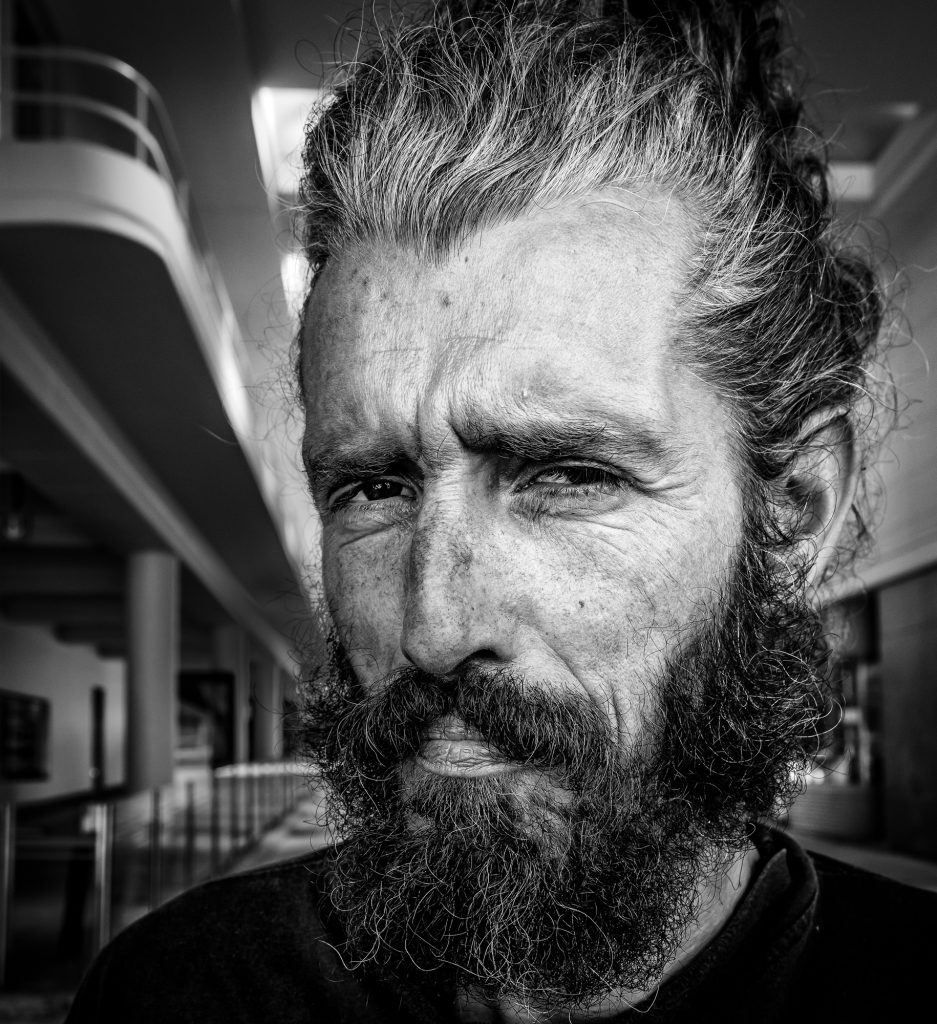
Photo by Vasco Trancoso (Copyright)
KD: “Of all the photographs that you’ve created since starting street photography, which one is your favorite and why?”
VT: “I must agree with this Imogen Cunningham quote, ‘which of my photographs is my favorite? The one I’m going to take tomorrow.’ Indeed, the satisfaction that comes after making a good shot ends up the next day with the desire to do more and be better.”
KD: “I would like to finish up our interview with a quote from your bio: ‘On the streets, I’m happy to discover daily miracles that arise as fragments of a parallel dimension — where the banal and ordinary can be extraordinary.’ Vasco, it shows how genuinely you feel that way in your photographs. Your work touched me very deeply. In all honesty, I’ve gone back to your blog dozens of times since I met you. And it’s not just about your photography. It’s also about your words, and your view of the world. I feel blessed to have met you. Most of the photographers who will be reading this interview are enthusiastic amateurs who are just getting started. Do you have anything that you would like to say to them in encouragement or guidance? And thank you for providing this interview.”
VT: “Well, for those who are just getting started photographing on the streets, I would say to always walk with a camera, walk a lot, and enjoy the sense of chance.
The daily miracles are waiting for you.
Live photography with a passion — without restrictions — and stay focused on each image you are doing.
After looking once, go back and look again. Visit the same sites and try to discover new opportunities.
Always walk with a camera, walk a lot, and enjoy the sense of chance.
Patience is key. To build your own style takes a long time without denying all the influences that you may have — it must be genuine. Try to work “out of the box” and shoot each picture as if it were the last.
Find inspiration by looking at books with photos of the great Masters, and see many good exhibitions.
Challenge the rules, and always try to evolve gradually, transforming your photographic eye.
The rules act as a guide for people who are beginning to take pictures. After that, they are no longer necessary. Everything comes and flows naturally.
Thanks a lot, Kent, for your nice words and this interview. Be happy!”
About Vasco Trancoso
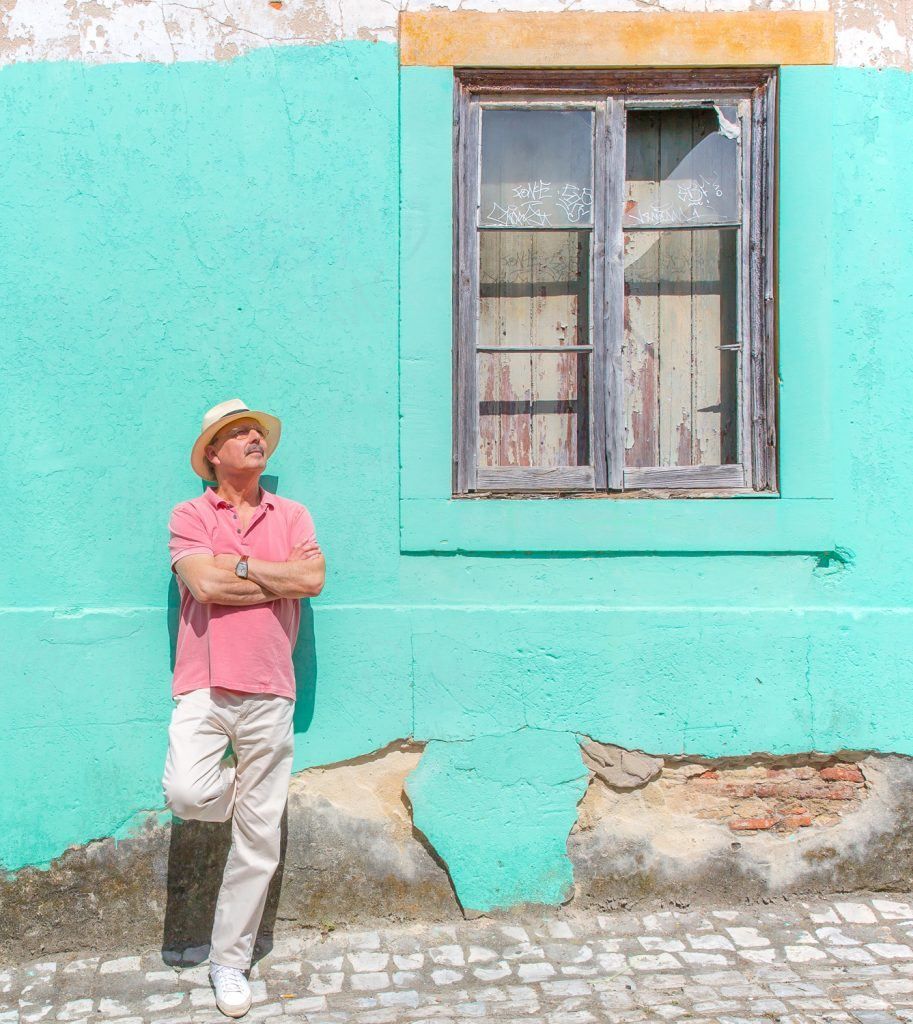
Vasco Trancoso discovered art and photography at an early age. He chose medicine as his career. Although, photography continued to be a lifelong endeavor, he didn’t pursue photography vigorously until his retirement in 2009. His images have been published in numerous books and exhibitions. In a very short period of time, his street portraits have risen to some of the most highly regarded on 500px. He writes a blog titled, “Heavenly”.
You can study more of the work produced by Vasco Trancoso at the following links:

